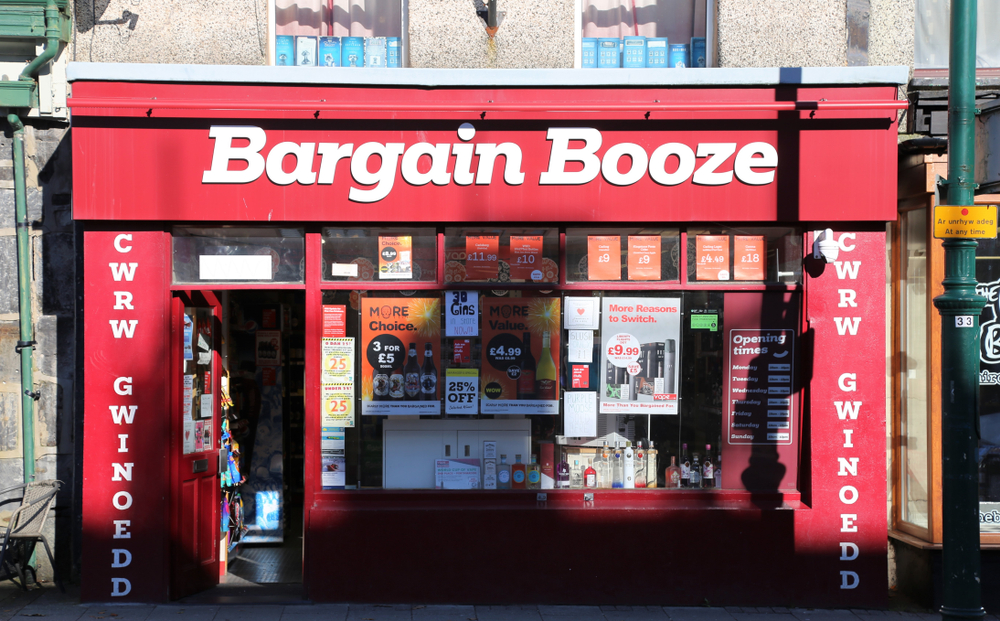
Alcohol is so much a part of our lives that the government deemed off-licences to be ‘essential services’ placing them alongside pharmacies and ensuring access to our favourite drug wasn’t compromised during the COVID-19 pandemic.
Add to this the fact that alcohol is more affordable than it’s ever been, giving us the most democratic and accessible drug available.
Sounds too good to be true and of course it is. Although access to alcohol is equal, its impact on our health is not.
We don’t talk about ‘class’ anymore, instead we use the sanitised term ‘socioeconomic’ groups, not that it makes any difference to those at the bottom of either. Pint for pint (or Prosecco glass for glass) those from lower socioeconomic (SES) groups bare a greater burden of harm from alcohol than those further up the scale, even when consuming equivalent amounts.
The greatest harm is of course alcohol related mortality, a growing problem in many Western countries including the United Kingdom. A new study by Probst and colleagues (2020) set about exploring the literature to establish what we know about the relationship between alcohol consumption, socioeconomic statues and mortality. The idea that those people from low SES experience greater harm than people with high SES, despite similar or lower amounts of alcohol consumption. This is commonly referred to as the ‘alcohol-harm paradox’.

The alcohol harm paradox refers to observations that lower socioeconomic status (SES) groups consume less alcohol but experience more alcohol-related problems.
Methods
The authors carried out a systematic review of the literature. The search included articles from January 2013 through to June 2019. They make clear their exclusion and inclusion criteria, which is always important, but for research investigating socioeconomic status understanding how this is defined and therefore used in the selection of the literature is useful detail.
At its crudest, income is used as a proxy for SES, however for this study not only was income a requirement, but also education, occupation, employment status and household assets, although I’m not sure what that means or how that would be measured.
Results
- Ten articles which included over 400,000 adults in total were finally identified at the end of the searching and sifting process.
- The reviewers found that of this sample, over 3,000 had died and were identified as having an alcohol-related event. That’s not news, but what was revealed was the pattern of drinking for this group:
- The total amount of alcohol consumed didn’t make a difference to the relationship between mortality and class
- It was the frequency of ‘heavy drinking’ that made the difference
- But even then, this only explained about 15-30% of the deaths, leaving the majority unexplained.

This evidence suggests that targeting heavy episodic alcohol use may help to reduce socioeconomic inequalities in mortality.
Strengths and limitations
This looks like a well conducted and comprehensive systematic review, which in the main is easy to follow and understand, but like all research is not perfect.
The start date for the search is not explained, so we don’t why that date was chosen; it might be that the researchers were concerned about some of the variables used as a proxy for SES might change if they extended the time period.
The researchers speculate about why the majority of deaths are unexplained, suggesting that errors in the measurement of alcohol consumption may be a factor. They also suggest that groups of people who drink the highest quantity of alcohol may be absent from some of the surveys. This all seems logical, but it’s worth remembering that this is nothing more than a best guess.

This review shines a light on how little we know about the relationship between alcohol consumption, socioeconomic statues and mortality.
Conclusions
It goes without saying that this is a complex relationship to investigate, but this systematic review does provide some new insights. Important incremental steps like this help reveal how socioeconomic status influences alcohol related mortality.
There is key intelligence from this research for public health, policy makers and clinicians, essentially any effort to reduce alcohol related harm for people in lower SES groups should be targeted at heavy episodic drinkers rather than all those that consume alcohol. An example of how this can be applied by policy is the introduction of minimum unit pricing of alcohol in Scotland, still to be introduced in England and Wales. Early evaluation of this policy shows encouraging results with one study by finding a reduction in alcohol purchased by households which consume the greatest amount (O’Donnell, 2019).
The authors rightly highlight that people from lower SES groups are less likely to access support from primary care in relation to heavy consumption of alcohol. So, policy makers, public health and specialist alcohol treatment services need to consider how they can reach out to this group to provide that support to avoid inadvertently contributing to the existing unequal access to support. One way of providing this would be to adopt a much more assertive outreach approach than exists. In the main, services wait for people to come to them rather than reaching out to these individuals in a timely and flexible way. This is an approach adopted by mental health services two to three decades ago, so there is an opportunity for some shared learning here.
Finally, there are vested interests at play on this issue. The alcohol industry works hard and has deep pockets that ensure that alcohol products remain desirable and accessible to all. They are fully aware of the harm their products cause and the impact this has on the poorest in our society, after all they are their most loyal customers. Any attempt to disrupt that relationship will be fought using all the resources and skills they have. The easiest way to measure the success of any public health intervention attempting to address alcohol related mortality is how much effort the alcohol industry puts into countering such a move.

Should specialist alcohol treatment services adopt the same kind of assertive outreach models as mental health services, to ensure equity of access to services across all socio-economic groups?
Conflicts of interest
None.
Links
Primary paper
Probst C, Kilian C, Sanchez S, Lange S, Rehm J. (2020) The role of alcohol use and drinking patterns in socioeconomic inequalities in mortality: a systematic review. The Lancet Public Health https://doi.org/10.1016/S2468-2667(20)30052-9
Other references
McCambridge, J., Kypri, K., Sheldon, T.A., Madden, M. and Babor, T.F., 2020. Advancing public health policy making through research on the political strategies of alcohol industry actors. Journal of Public Health, 42(2), pp.262-269. https://academic.oup.com/jpubhealth/article/42/2/262/5434773
O’Donnell, A., Anderson, P., Jané-Llopis, E., Manthey, J., Kaner, E. and Rehm, J., 2019. Immediate impact of minimum unit pricing on alcohol purchases in Scotland: controlled interrupted time series analysis for 2015-18. BMJ, 366, p.l5274.https://www.bmj.com/content/366/bmj.l5274
Photo credits
- Photo by Frank Luca on Unsplash
- Photo by James Sutton on Unsplash

The trouble with talking about “class” is that no one can ever agree on which class is which.
On a side note, a lot of Marxists should read Marx’s writings on class more carefully. He was not very complementary about the lumpenproletariat.